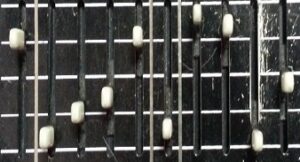EQ types

Going to focus on
- parametric
- shelving
- low pass and high pass filters
EQ allows us to have control over specific frequencies in a sound by changing their amplitudes This means we can change the character or timbre of a sound by altering the partials and harmonics or even fundamental. We can also use EQ for a number of other things such as correcting problems like :
- Removing harm or hiss
- Correcting unwanted resonance such as from an instrument sound box or from a room
- making up for differences in microphones or mic placement
- it can help us to bring a sound or instrument out more in a mix
- or pull it back make it less prominent
- we can even use it to create stereo effects by separating the channels at different frequencies
Parametric EQ
To start with parametric EQ is the type of EQ that can be used for boosting or cutting specific frequencies over a particular range. You choose which frequency to boost or cut using the frequency knob and that will be the center of the range of frequencies that you’re going to adjust You then use the gain knob to boost or cut the center frequency
How wide the range of frequencies that you’re boosting or cutting is or the bandwidth is determined by the Q. A lot of the time are high Q setting means a narrower range of frequencies while a lower setting means a wider range. A narrower bandwidth or Q setting can be really useful for corrective EQ. You can carve out a particular frequency that might be really helpful if you’re trying to get rid of harm or something like that.
A parametric EQ can also be useful when you want to target specific frequencies without affecting any of the other frequencies nearby. A really useful way of finding those frequencies is to boost the gain and then sweep through using the frequency knob. You can really over exaggerate the frequencies so that you can hear what you’re looking for. Then once you’ve found it you can cut it or do whatever you like with it
A broader bandwidth can be useful for boosting or cutting a more general range of frequencies. For example just turning the base up a bit or down a bit so maybe when you want to EQ a bit more musically rather than trying to target specific frequencies but for boosting or cutting a more general range like that shelving EQ might be a bit more suitable
Shoving EQ
Shoving EQ is maybe a little bit more like the type of EQ you’ll find on a home stereo that just boosts the base or the treble. You tend to have low and high shelving EQs and it basically just boosts all cuts everything below or above a specific frequency. It is worth bearing in mind that with a shelving EQ, you are limited by the amount of gain that you have available.
High or Low Pass
If you wanted to cut everything below or above a specific frequency then you might be better off using a low pass or high pass filter they’re also called low cut or high cut so a low pass is a high cut because it passes through the low frequencies or Cuts the high frequencies and vice versa So basically in this example everything here is cut out completely so this is a high pass filter because it passes through the high frequencies and cuts the low frequencies And we could switch to a low pass or high cut filter by pressing this button and it does the opposite From the Oxford EQ we have separate sections for the low pass and high pass filters Just have this frequency knob here It just goes up to 400 Hertz and this button here Besides how steep the slope is And that’s measured in DB per octave so this really steep slope here is basically dropping it by 36 DB every octave And so the low pass filter It says very subtle at first did we turn it up to 36 And that makes a very steep Really cuts the frequencies quite dramatically
One other thing worth mentioning with a low pass and high pass filter is the frequency referred to as the cutoff frequency. One area that can be a possible cause for confusion is the point that is 3 DB lower than the maximum level because of the cutoff frequency. In other words, it’s not the point at which it starts to fade out it’s the point at which it’s already half the volume.